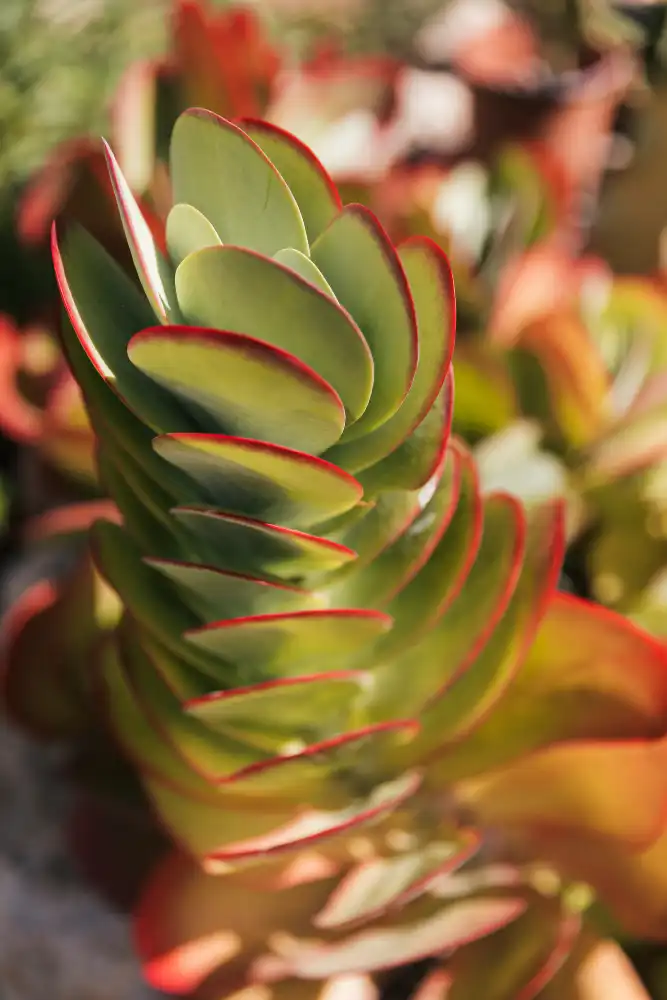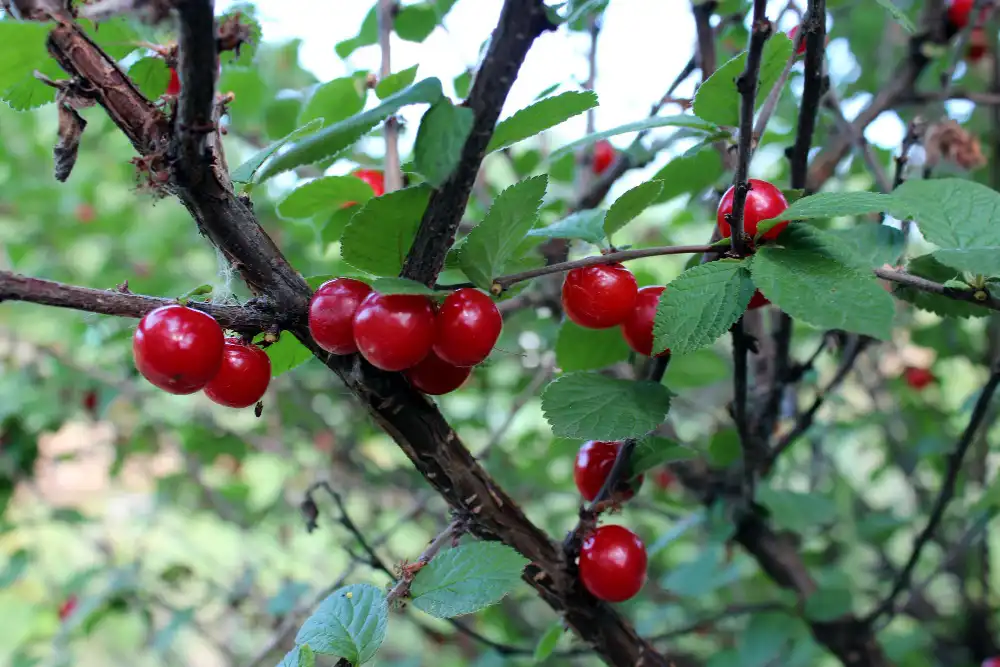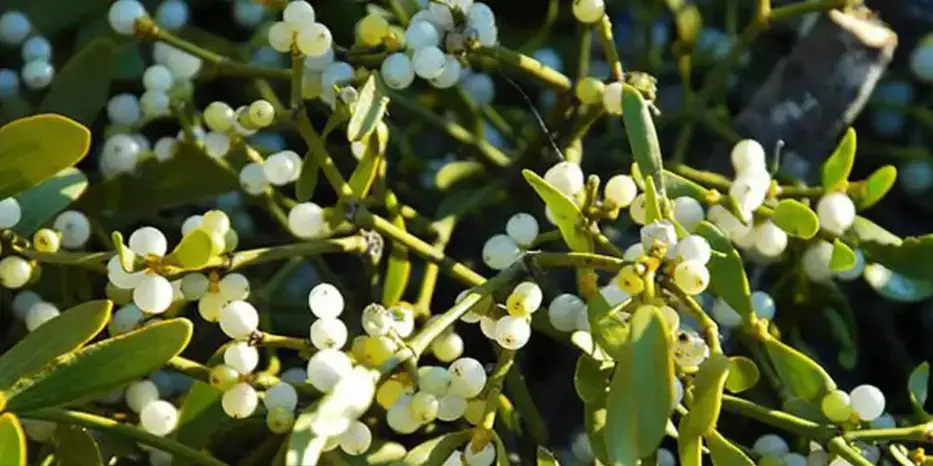
Soil Health & Fertilization
We unite suppliers and green industry professionals worldwide
The Paddle Plant (Kalanchoe thyrsiflora or Kalanchoe luciae) is sculpture as much as it is succulent. This dramatic plant, with its large, round, paddle-shaped leaves tinged with red edges, adds a bold, architectural presence to any garden or indoor space
By Mariam Scott
|Published on June 12, 2025


“Ever seen a plant that’s a work of modern art?”
The Paddle Plant (Kalanchoe thyrsiflora or Kalanchoe luciae) is sculpture as much as it is succulent. This dramatic plant, with its large, round, paddle-shaped leaves tinged with red edges, adds a bold, architectural presence to any garden or indoor space. The thick, waxy leaves grow in a rosette, often resembling a stack of colorful pancakes—hence its nickname, “Flapjack.”
The Paddle Plant is native to South Africa, and is not just a beautiful addition to your indoor plant collection, but also low-maintenance, drought-tolerant — great for first-time owners and collectors alike. Whether grown inside in a sunny window, or as part of an xeriscape garden, this plant requires little while providing the greatest return on style.
| Common Names | Paddle Plant, Flapjack, Desert Cabbage |
| Botanical Name | Kalanchoe luciae (often confused with Kalanchoe thyrsiflora) |
| Type | Succulent, perennial |
| Height/Spread | 12–24 inches tall and up to 18 inches wide |
| Sunlight | Full sun to bright indirect light |
| Soil | Well-draining soil, such as sandy or cactus mix |
| Watering | Infrequently (allow soil to dry out completely between waterings) |
| Bloom Time | Late winter to early spring (rarely indoors) |
| Hardiness Zones | 9 to 11 (cultivated indoors or as an annual elsewhere) |

September 25, 2025
9 minute read
September 24, 2025
9 minute read
September 23, 2025
10 minute read
September 22, 2025
9 minute read


Join as a seller and connect with thousands of B2B buyers nationwide!
Sign Up

Nanking Cherry
Nanking Cherry (Prunus tomentosa) is a fruiting shrub that deserves a starring role in both edible and ornamental landscapes. This hardy deciduous species delights with pale pink-white blooms in spring, followed by a heavy crop of bright red cherries.

Lacecap Hydrangea
Would you ever imagine a plant that can change its flower color depending on the soil? Lacecap Hydrangea (Hydrangea macrophylla var. normalis) does exactly that.

Oak Mistletoe
Oak Mistletoe (Phoradendron leucarpum) is a semi-parasitic plant known as much for its role in nature as it is for its place in holiday traditions. It’s admired for its evergreen foliage but misunderstood because of its unusual growing habits.

Oakleaf Hydrangea
Oakleaf Hydrangea (Hydrangea quercifolia) is a genuine multi-season miracle. This shrub offers something special every season — from creamy white flower cones in summer to crimson foliage in autumn and exfoliating bark that adds texture to winter gardens.
Paddle Plants are ideal for the succulent lovers who don’t want the responsibility of daily care. They thrive with little watering and a lot of light. Over time, mature plants may send up a tall flower spike from the center, signaling the end of their lifecycle—but before that, they bring months (or even years) of vibrant foliage and structure. Keep the roots in well-draining soil, give it a little sun, and avoid overwatering for a happy, healthy specimen.
Paddle Plants like bright light, and their best coloration occurs when they are in full sun. If you’re keeping it outdoors, select a location that gets at least 6 hours of direct sunlight each day. If growing indoors, a window facing south or west is excellent. In lower light, the leaf edges may lose their reddish tinge and the plant can become leggy. If going outside, gradually get used to full sun to prevent sunburn.
Excellent drainage is key. Use a cactus or succulent potting mix, or mix regular soil with sand or perlite to aid airflow and prevent rot. These plants are used to dry, rocky environments and do not like it when their roots are soggy. Gradually acclimate to full sun if moving outdoors to avoid sunburn.
Less is more when it comes to watering Paddle Plants. Let the soil dry out thoroughly between waterings. Also water every 2–3 weeks during the growing season (spring and summer). In winter, water it less. Avoid watering into the rosette as this may cause it to rot. Signs of overwatering include mushy leaves and a collapsed base.
Paddle Plants need little pruning beyond removing spent or damaged leaves. If a flower spike appears, you can enjoy it, and then cut it back after it fades. Trim leggy or etiolated growth to keep the plant tidy. Removing lower leaves as they naturally die helps prevent pests and keeps the plant looking neat. Always prune with clean, sharp scissors or garden shears to prevent infection.
Paddle Plants are simple to propagate and there are multiple ways to grow your collection.
It just takes patience — the success rate is very high if the cuttings are kept dry and warm.
This plant is perfectly adapted to the life in a pot, whether inside or out.
In colder zones, Paddle Plants can’t withstand frost and should be brought inside when temperatures dip below 50 degrees Fahrenheit.
Paddle Plants bloom only when mature and under ideal conditions—often outdoors in late winter or spring. The flower spike grows tall and bears clusters of tubular yellow flowers.This is usually a monocarpic event,meaning the main rosette may die after flowering. However, by then, it often produces offsets to continue the plant’s legacy. Houseplants rarely flower, but with good light and low stress conditions, it is possible.
Paddle Plants are tough, but do have some issues:
Its sculptural shape, colorful leaves and minimal requirements make the Paddle Plant an ideal choice for any modern garden or succulent collection. Whether you’re a new plant parent or a seasoned collector, its architectural shape and easygoing nature set it apart from other plant varieties. Just give it light, space, and time—and this desert native will reward you with style and beauty in return.
It is, indeed, if ingested. Keep out of the reach of cats, dogs, and curious pets.
Bright light is key. The more sun it gets, the more pronounced the red margins become.
Only in zones 9–11. In cooler areas, treat it as a summer annual or overwinter indoors.
It could be overwatered, lacking light, or flowering (which can weaken the rosette).

Soil Health & Fertilization
Victor Miller

Pest Identification & Prevention
Victor Miller

Lawn Care Tips & Maintenance
Victor Miller

Soil Health & Fertilization
Victor Miller

Smart Irrigation Systems
Victor Miller

Patios, Walkways & Driveways
Victor Miller

Soil Health & Fertilization
Victor Miller

Pest Identification & Prevention
Victor Miller
My Account
Our team is always here to help.
We are open Monday - Friday, 9:00 AM to 4:30 PM PST.